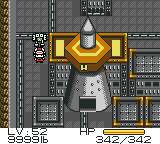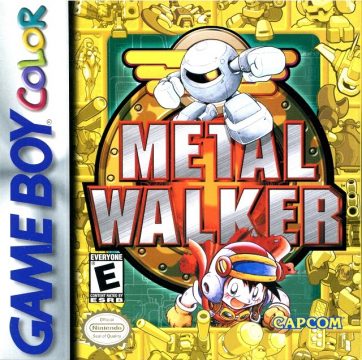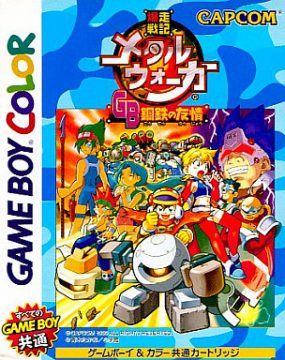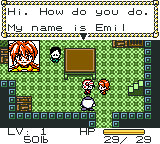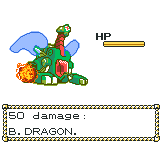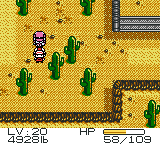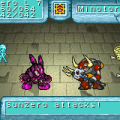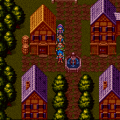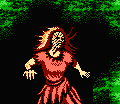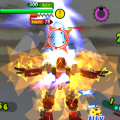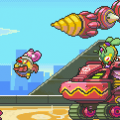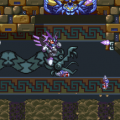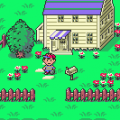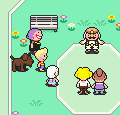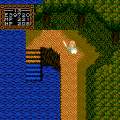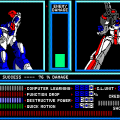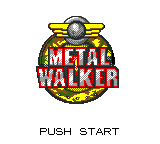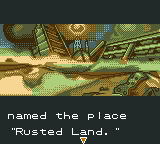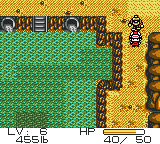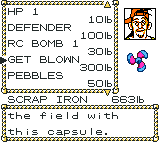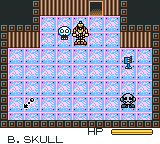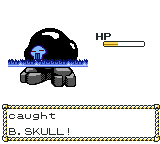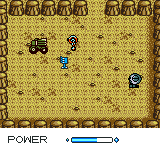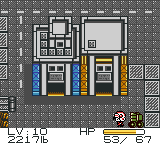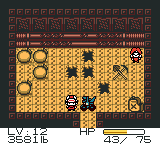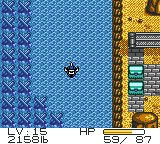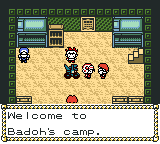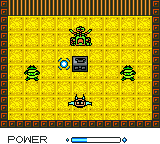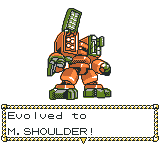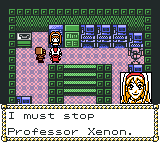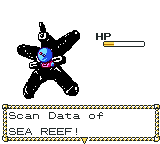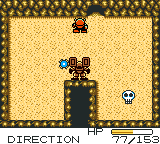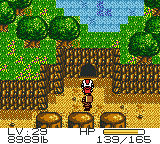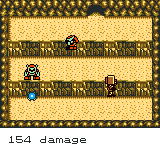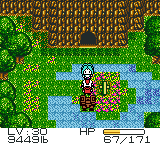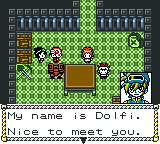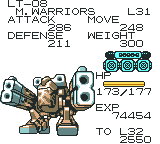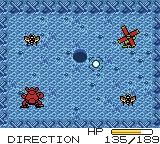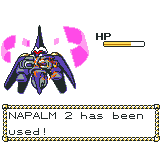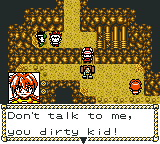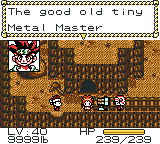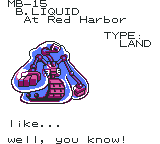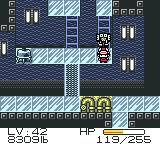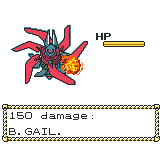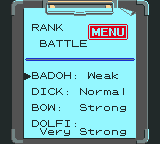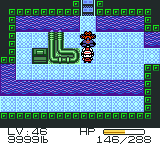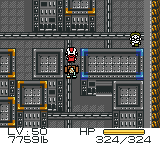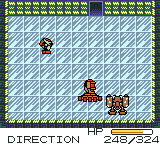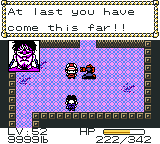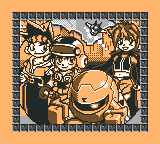The explosion of Pokemon’s popularity during the late 90s and early 2000s would go on to affect video game discourse for years to come. Any game wanting to cash in on the craze or even games with slight similarities to the media giant were victim to endless comparisons and scrutiny under the eyes of gamers and critics alike. Capcom’s Metal Walker (Bakusou Senki Metal Walker GB: Kotetsu no Yuujou in Japan) was just one of many titles destined to live in Pokemon’s shadow, having the misfortune of releasing four months after Pokemon Gold and Silver in the US (February 2001) and just one month after them in Japan (December 24th, 1999).
While the game reviewed well with critics at the time, it was frequently chastised for being blatant and shameless in its supposed imitation of Nintendo’s golden goose. These reviews do Metal Walker a disservice, as it’s a RPG with some genuinely creative ideas, executed in a manner that resembles Custom Robo or Medabots far more than it does Pokemon.
Metal Walker began as a LCD pedometer game released exclusively in Japan in October 1998 (similar to Pokemon’s Pocket Pikachu or Digimon’s Digivice). In the game, players would walk in order to fight enemy Metal Walkers, raise their Metal Walker’s stats, and find items to evolve into more powerful forms. The concepts introduced here would be retooled for the Game Boy Color game and some of the Metal Walkers would return, but the pedometer has no connectivity with the GBC game unlike the Pocket Pikachu. Metal Walker was also backed by a toy line, dubbed the “Bakuso Senki Metal Walker 3D Collection”, a promotional figure standee of Meta Ball, the game’s mascot, meant for display in stores, and a one volume manga that closely follows the plot of the GBC game. The character designs in both the manga and the GBC game were illustrated by Takao Aoki, the writer and illustrator of the Beyblade manga series.
The world of Metal Walker revolves around “Core Units”, curious metals with evolutionary capabilities that can be harnessed for good or evil. The protagonist (referred to as Tetto in the manual and the manga) and his father are what’s known as “Core Hunters”, people dedicated to searching for Core Units for the sake of conducting research on them. Their profession brings them to the Rusted Land, an island that was devastated by a mysterious incident 50 years prior to the events of the game. Not long after they arrive, they’re attacked by a Metal Buster, the name given to the hostile robots that roam the Rusted Land, and are separated. Thus, it becomes Tetto’s mission to track down his missing father, ultimately discovering the secret of the incident in the process.
As you might expect from a game that was primarily marketed to children, the plot is basic and simply a means to get you to explore the Rusted Land. Tetto meets various characters along the way, such as a rival Core Hunter named Badoh and Emil, the bratty daughter of a CEO, but they contribute very little to the plot and do even less to assist you. The game also suffers from a poor localization that brings Capcom’s previous effort on Breath of Fire II to mind – characters speak in stiff, overly formal language further mired by an overreliance on abbreviations. The plot also fails to move anywhere for much of the game, with the twists regarding Tetto’s father and the incident being obvious well before they’re revealed.
The highlight of Metal Walker lies in its unique battle system, referred to as “Flip Battles” in-game. During a Flip Battle, the goal is to take down the opposing Metal Busters by launching your Metal Walker around the arena in order to hit them, much like a game of billiards. Each turn, you get to determine the power and angle at which you launch your Metal Walker, and certain Metal Walkers will be affected by these factors differently based on their weight; It’s easy to bounce a light Metal Walker around the arena several times in one turn, whereas a heavy Metal Walker will be lucky to ricochet more than once even at max power. Once a combatant is hit, damage is calculated (via a different screen showing a detailed illustration of the Metal Walker/Buster) and – if they’re not KOed -they’ll get bounced around the arena, damaging anything they come into contact with. It’s essential to factor this into each move you make since it’s possible to score multiple KOs in one turn, but it’s also possible to hurt yourself by bouncing an opponent back into you by hitting them too hard against the wall. Even the act of escaping from battle has a clever twist to it, requiring the player to launch their Metal Walker into a narrow hole on the outskirts of the arena. Since Metal Walker is a RPG, you’ll have to keep leveling up in order to compete and you’ll also have to take each combatant’s typing into account. Much like Fire Emblem’s weapon triangle, there are three types of Metal Walkers and each one has an advantage over another – Land beats Marine, Marine beats Sky, and Sky beats Land.
Battles are also complemented by a robust item system, which consists of capsules that can be collected for use in battle. Capsules are automatically deployed onto the battlefield in a random spot every turn and can be used by having your Metal Walker make contact with them. Capsules have a variety of applications, including powerful attacks, stat buffs/debuffs, healing, and terrain changes, all of which have a dramatic effect on the outcome of a battle. Regardless of whether or not a capsule is used during the turn it comes out, it gets replaced on the next turn by the next capsule in your list (capsules that don’t get used will be returned to you after the battle), so you typically only have one chance per battle to make use of a given capsule.
The major wrinkle that makes capsules both exciting and frustrating is that any capsule can be collected by any combatant. This allows players to take advantage of foes packing powerful capsules by getting to their capsules first, but it also allows enemies to do annoying things like waste your HP capsules or eke out a lucky win against you just because your powerful Hammer capsule spawned right next to them. It’s possible to arrange your list of up to 30 capsules in any order you like and enable/disable capsules individually, allowing for a good amount of flexibility in the way you approach battles. However, the menu in which you do so is incredibly slow and user unfriendly to the point that you’ll likely just accept having some capsules go to waste. There’s actually an option in the game that grants the player manual control over capsule deployment (capsules won’t be deployed unless you press start on your turn), but in an incomprehensibly bizarre move, it requires talking to a seemingly ordinary NPC in an optional battle arena that can’t be accessed until a few hours into the game, making it very easy to miss.
New capsules are acquired by purchasing and using the “Analyzer” capsule on the Metal Busters you encounter during your travels. If an enemy touches your Analyzer, they’ll get “captured” and you’ll get access to a new capsule to purchase in the shop. This is likely a major reason for all of the Pokemon comparisons, since you’re “catching” each new opponent you encounter for your benefit. The key difference is that you never get to amass a team of Metal Walkers to use – capturing opponents to unlock capsules is simply a means to an end, an opportunity to bolster your existing arsenal to survive in a hostile land rather than make new friends.
As you progress through the game, you’ll gain access to core units corresponding to the three types of Metal Walkers. Equipping these core units to Meta Ball will change his form, granting him higher stats and new abilities that allow for Metroidvania-esque traversal of the world. Land units will allow you to break progressively larger obstacles in your path, Marine units let you travel across the sea, and Sky units grant you the ability to fly over holes in the ground. Each one gets plenty of use, and there are good incentives for backtracking, such as recipes to create unique capsules, optional dungeons, and even special core units of each type that unlock the most powerful Metal Walkers. Much like the capsules, evolution is also a means to an end rather than the goal itself; you’re not meant to stick to one evolutionary path forever, but rather swap between them as necessary in order to accomplish your goals and have the advantage in battle.
Unfortunately, the strong ideas that comprise Metal Walker fall apart over the course of the game. The Rusted Land is a large wasteland, containing places like caves, ruined cities, and polluted lakes, and the journey will have you exploring nearly every corner of it as you contest with random battles. The problem is that the encounter rate is absolutely ludicrous – expect to be harassed by encounters every few steps you take on almost every screen. Worse yet, you can’t button mash your way through easy encounters, since the battle system requires a constant degree of attention to actually hit your opponents and avoid wasted capsules. The repetition of the game’s design also feels like it discourages exploration, since the map is largely empty space and dungeons are entirely devoid of puzzles or gimmicks. While the sometimes atmospheric emptiness is fitting for a land that has been ravaged by disaster, it doesn’t always make for an engaging RPG experience.
Metal Walker’s environments are mostly made up of washed out shades of brown or gray, so you’ll end up seeing a lot of repetitive scenery that makes it difficult to keep track of where you are. Character sprites are relatively basic in detail as well, with the portraits for the major characters looking somewhat squished. The big exception to the rule is the Ever Green area, a patch of vibrant greenery hidden in the center of the island that’s a delight to stumble upon after hours of boring brown fields. The art design shines during battles, with the illustrations for the Metal Walkers and Metal Busters being impressively detailed and massive in size. The variety on display is admirable too, ranging from things like facsimiles of planes and boats to evocative, alien-like bipedal robots. Music is without a doubt the weakest aspect of the game; you’ll end up hearing the same few tracks ad nauseam. The overworld is perhaps the only part where the music feels adequate, capturing a sense of mystery and desolation befitting of the Rusted Land.
It’s clear that Capcom wanted Metal Walker to be the next big thing, between the marketing push and the timing of its release. While that certainly didn’t work out, as Metal Walker has been long forgotten by most, never received a sequel, and doesn’t even show up in Capcom’s many crossovers, it’s still a game worth commending in some ways. The Game Boy Color didn’t have a ton of RPGs in its library, and the idea of combining billiards with the framework of a JRPG is something that has yet to be followed up on (the closest comparison being the 2013 mobile game Monster Strike). It’s too repetitive and lacks in storytelling to recommend it to most RPG players nowadays, and it’s not quite what you’d call a hidden gem either, but it’s a truly unique game in Capcom’s massive history, which is something still worth exploring with the right mindset.
Links
http://web.archive.org/web/20030222164750/http://www.capcom.co.jp/newproducts/consumer/metal/metal.html – Capcom’s official website for the pedometer
https://twitter.com/daiouika0/status/1195356590444036101?s=20 – Screenshot of the toy collection from Comaxinsuke’s Twitter (the illustrator for the pedometer game)
https://99kara00atama.hatenablog.com/entry/2018/03/11/120001 – example of the promotional Meta Ball figure from a Japanese blog
